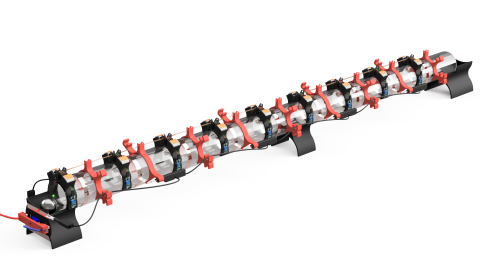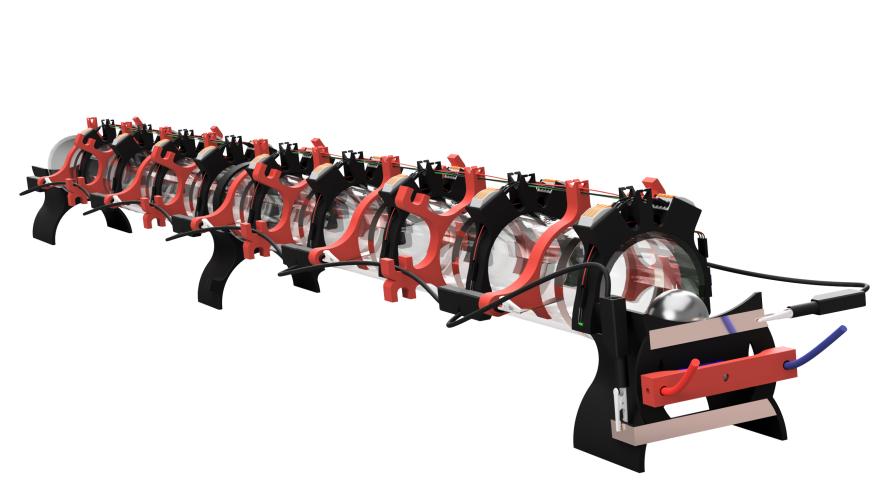3D-printed LINAC

Short Description
Build a fully functional model of a LINAC to demonstrate how charged particles can be accelerated in oscillating electric fields.
Post date
10/03/2023 - 07:26
Activity Type
Age group
CERN Topic
Curriculum Topic
Description
Linear particle accelerators (LINACs) are essential tools in modern particle physics, serving as the main sources for ion beams (LINAC 3) and proton beams (LINAC 4) at CERN.
To make the principles of LINACs more accessible to high school students, we have developed a 3D-printed LINAC model. This hands-on tool demonstrates how charged particles can be accelerated using oscillating electric fields. In the model, a graphite-coated ping pong ball is accelerated through a plexiglass tube using a custom-built switch and minimal equipment.
You can explore more about LINAC technology by clicking here.
Material List
- 3D-printed parts. Click here to download the files.
- Graphite coated ping-pong ball.
- Plexiglass tube (150 cm long).
- Copper foil tape.
- Wimshurts machine.
- High voltage switch.
- Arduino micro controller and standard electronical components. To find the complete list, click here to download the assembly instructions.
- Arduino sketch. Click here to download the files.
Instructions
- Prepare all the material needed.
- Download the assembly manual by clicking here. Follow the assembly instructions to set up one of the following experiments:
- LINAC model I: A simple Arduino-controlled linear accelerator with pushbutton control.
- LINAC model II: A more sophisticated Arduino-controlled linear accelerator that uses light barriers to automatically detect the position of the ping-pong ball and invert the electric field accordingly.
- Experiment with your setup to explore the scientific concepts of particle acceleration and oscillating electric fields.
⚠️ Warning
- Attention of high voltage, serious risk of electric shock and resulting injuries!
- This activity must always be performed under adult supervision.
- The experiments described in this manual make use of a Wimshurst machine commonly used in high schools for teaching purposes. Do not use any other high voltage source!
- All safety restrictions set forth in the manual of the Wimshurst machine and all governmental safety regulations apply.



